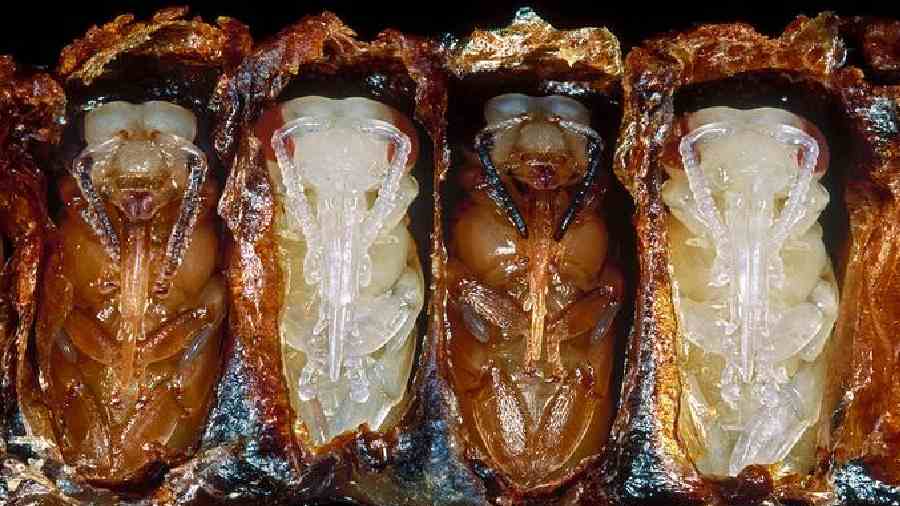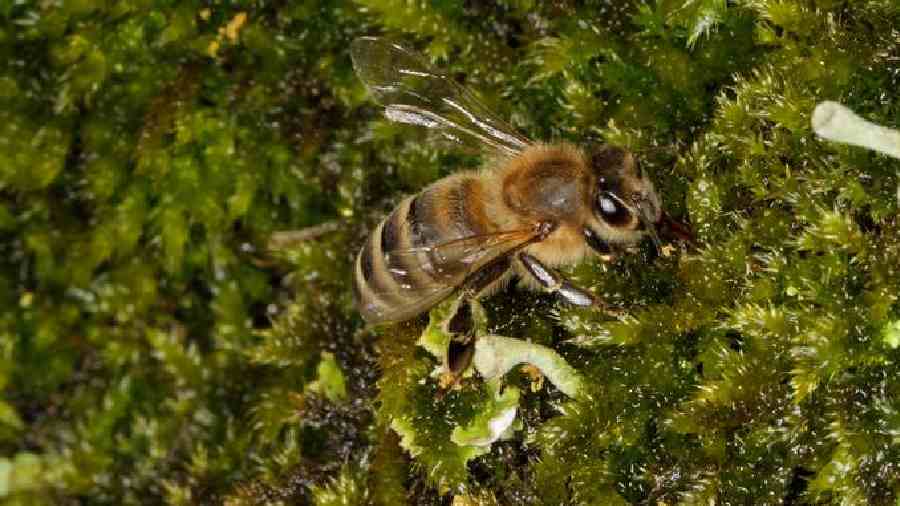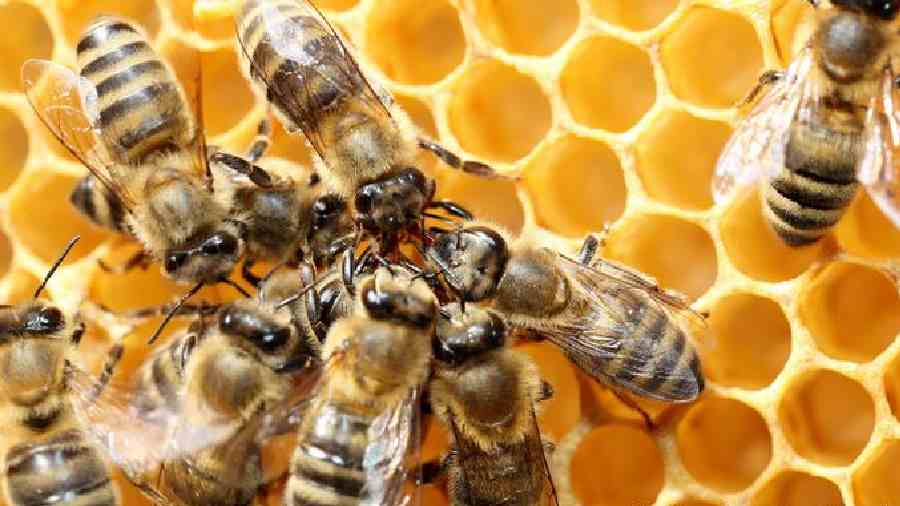Hornets can be vicious. Some like nothing more than smashing their way into a beehive, decapitating its inhabitants and leaving the colony in ruins. But the hornet that dares attack a Japanese honeybee colony might get more than it bargained for.
As the hornet hones in, a defensive army swarms the attacker. Hundreds of bees buzz so furiously, the temperature at the heart of their dense mass rises to 46 degrees Celsius (about 115 degrees Fahrenheit). When the swarm dissipates, it leaves behind a dead hornet — cooked alive by its would-be prey.

A wild honeybee hive nestled in the branches of a peach tree Deutsche Welle
The "hot defensive bee ball" is a high-stakes tactic — a few soldier bees usually lose their lives along with the hornet — and not common to all species of bee. But its principles of working together for the good of the colony, and skillfully controlling temperature, are echoed in beehives around the world.
A temperature-controlled 'superorganism'
Unlike mammals, insects can't regulate their own body temperature. But working together, the beehive acts like "superorganism" with a steady internal warmth.
To raise their young, honeybees need to keep their home within a cosy 33 to 36 degrees Celsius. Luckily, bees can sense temperature changes of just a quarter of a degree. And they have a knack for insulated architecture that any environmentally minded homeowner might aspire to.

If the temperature is off by just a couple of degrees, bee pupae may suffer deformities Deutsche Welle
They carefully select sheltered sites to build their hives, and use propolis — made from resins gathered from plants — to plug holes and keep out drafts and moisture. The "brood chamber" itself is encased in layers of pollen, honey and wax. And if that isn't enough, adult bees huddle their fuzzy bodies together to keep one other, and their young, warm.
Keeping cool in a warming world
Insulation keeps warmth out as well as in, and during heat waves, bees also proactively work to keep the colony cool — gathering water, which they distribute in droplets throughout the hive, and fanning air through its chambers with their wings.

A honeybee gathers water from moss, bringing droplets of moisture back to keep the hive cool Deutsche Welle
The climate crisis is taking its toll on bees, and causing some populations to fall out of sync with the flowering plants they depend on for food. But researchers are looking into whether their impressive thermoregulation abilities might help bees survive in a warming world.











